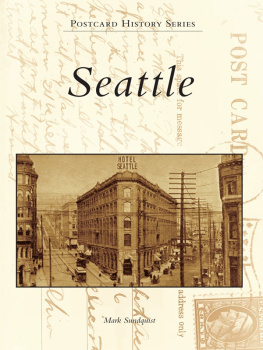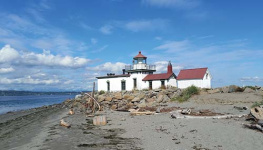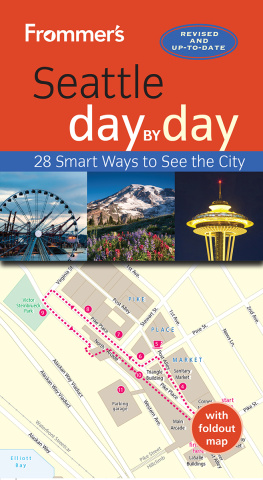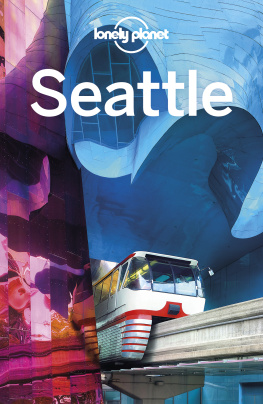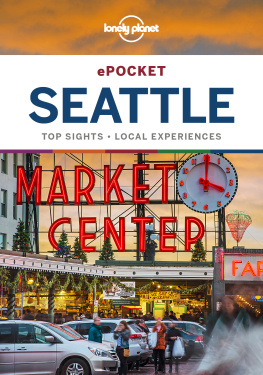STIRRING UP
SEATTLE

.... one goes on living as one does - and even manages to execute an occasional pirouette on the edge of the precipice.Lytton Strachey

STIRRING UP
SEATTLE
ALLIED ARTS in the CIVIC LANDSCAPE

R. M. CAMPBELL
PHOTOGRAPHS by ROGER SCHREIBER
ALLIED ARTS FOUNDATION
Seattle
in association with

2014 by Allied Arts Foundation
Printed and bound in the United States of America
Design by Thomas Eykemans
Composed in Alegreya, typeface designed by Juan Pablo del Peral
18 17 16 15 14 5 4 3 2 1
All rights reserved. No part of this publication may be reproduced or
transmitted in any form or by any means, electronic or mechanical,
including photocopy, recording, or any information storage or retrieval
system, without permission in writing from the publisher.
ALLIED ARTS FOUNDATION
4111 E. Madison St. #52
Seattle, WA 98112
UNIVERSITY OF WASHINGTON PRESS
www.washington.edu/uwpress
LIBRARY OF CONGRESS CATALOGING-IN-PUBLICATION DATA
Campbell, R. M. (Richard M.)
Stirring up Seattle : Allied Arts in the civic landscape / R.M. Campbell ;
photographs by Roger Schreiber. First [edition].
pages cm
Includes bibliographical references and index.
ISBN 978-0-295-99394-2 (hardback : alk. paper) 1. Allied Arts of Seattle, Inc.
2. Art patronageWashington (State)Seattle. 3. Civic improvementWashington (State)Seattle. I. Schreiber, Roger, illustrator. II. Title.
NX712.A45C36 2014 700.60797772dc23 2014018114
The paper used in this publication is acid-free and meets the minimum
requirements of American National Standard for Information Sciences
Permanence of Paper for Printed Library Materials, ANSI Z39.481984.
To the memory of my mother and father
Some of us are born to be bit players,
others have bitness thru supon us.


Contents

Foreword
BY MARY B. CONEY
SOMETHING HAPPENED IN SEATTLE FROM THE MID-1950S TO THE mid-1980s that made Seattle a different, better city than it had been. There were the obvious changes: the hosting of the Worlds Fair, the developing of Seattle Center, the saving of Pike Place Market, and the preserving of Pioneer Square. But there were other changes, less dramatic in scale but equally important in the lives of all who lived in our city during this extraordinary period: the fight to regulate the billboards and bury unsightly overhead wires that marred our streetscape; the protection and promotion of street trees; the explosion of cultural events, both organized and spontaneous; and the emergence of theater, music, and opera on a scale hitherto unknown in the Northwest. Old buildings and neighborhoods were considered historic and worthy of preservation. Aesthetics were becoming a significant point of discussion in city council meetings and administrative offices: public funding of art at the city, county, and state levels was no longer a pipe dream of the arts communities but an accepted value for the lives of all citizenspoor, rich, or in between.
Change of this scope did not come from one group of citizens or civic organizations; many played a part, in concert with one another and sometimes alone. But certainly a central source of energy started with a few individuals who came together to discuss Seattles future, how it might grow, what could be kept, what should be changed. With a whimsy that would remain part of its character, this group of professors, architects, lawyers, activists, and artists called itself the Beer and Culture Society. Later it would take on the more serious name Allied Arts of Seattle, signaling its wide-ranging interest in all things cultural and architectural.

Five Architects, 1984. Left to right: Ralph Anderson, Al Bumgardner, Ibsen Nelsen, Fred Bassetti, and Victor Steinbrueck. Photo by Mary Randlett.
For thirty-some years, Allied Arts was a major force, engaging in almost all issues of the day, either leading the cause or joining with others to make their cases stronger, their voices more effective. But, even at the height of their considerable influence, the group kept a sense of play. They took the work seriously, but not themselves. One observer called them a merry band of warriors.
Alice Rooney, longtime director, described the groups common character thus: intelligent, knowledgeable, tenacious, visionary, scrappy, coura geous, generous, and a little bit quirky. Most had full-time careers, though many sacrificed, at least temporarily, their professional (and at times, personal) lives to attend endless hearings, write position papers, plot strategies for passing favored legislation, or stay late after a meeting to celebrate a victory. None, I think, gained financially from being a member of Allied Arts; it was not that kind of organization. It had cachet but was not part of Seattles social set or business communityalthough it joined in with these when mutual goals could be served. Some played leadership roles in Allied Arts and were visible to the larger public. Others stayed offstage, pouring wine, collating minutes, handing out brochures, carrying placards. Peggy Golberg, who embodied the groups wit and style, called it the best club in townthough it was inclusive rather than exclusive, fitting with Allied Arts history of welcoming newcomers into its midst.
It didnt last forever. More a torrent than a stream, the organization inevitably spent its force and has now settled into Seattles sediment so deeply that its accomplishments are indivisible from the city itself. Some members have died, others have retired into their private lives, and many have gone on to other places, other work. A foundation in Allied Arts name, started by former presidents and stalwarts, has kept alive the groups original mission of serving established artists as well as those who have yet to obtain success. It has also kept those of us still around in touch with each other. The friendships formed in those heady times were built not so much on nostalgia as on camaraderie andyesjoy.
Stories abound, of course, elaborated by time and memory. The accumulation of those memories convinced us that there was a story to be recovered and shared in something more permanent than our joint and several selves.





